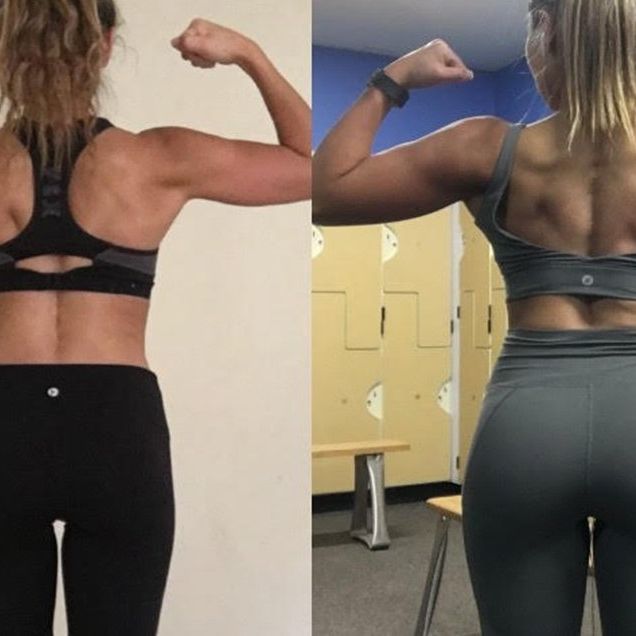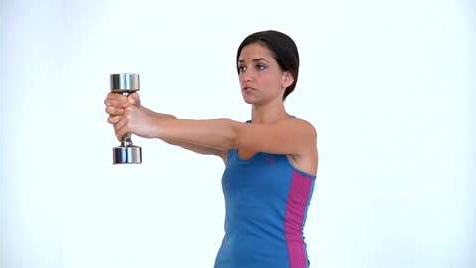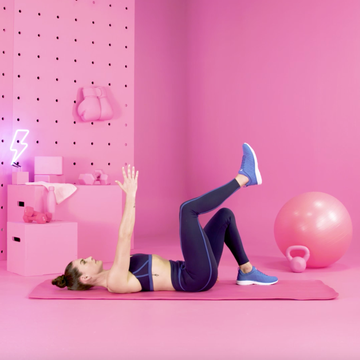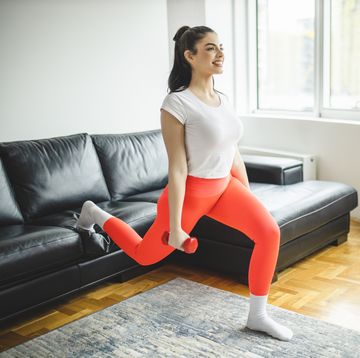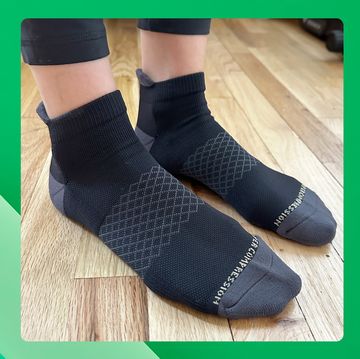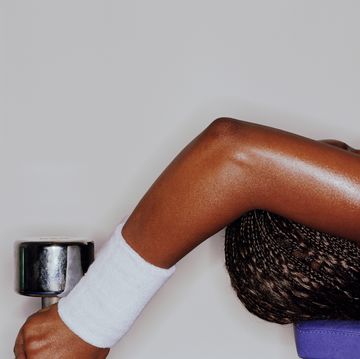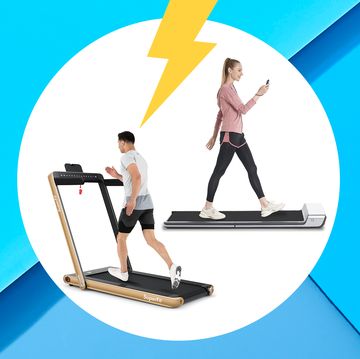Sports were always really big in my family, and as a kid, I was super into gymnastics and cheerleading. But when I was in eighth grade, I was diagnosed with a severe case of scoliosis. I had to undergo spinal fusion surgery to get two 14-inch titanium rods drilled in my spine to straighten it out. It took a solid two years of recovery. My back no longer had the flexibility it used to, so I had to give up the sports I was passionate about.
Growing up with seven incredibly athletic siblings, I felt like an outcast. I wanted to be good at something, but I didn't have the same mobility. I attempted three different sports in high school, but either got cut from the team or I couldn’t continue playing because of my back pain. So instead, I would come home from school, watch a few hours of TV, and eat a bag of chips for dinner. I wasn't super overweight, but I was definitely not healthy.
THE INTRODUCTION
Then one day during my senior year, my dad asked if I wanted to go to the gym with him. I tagged along and really liked being able to exercise again, but was totally clueless. I would hop on cardio machines, spend an hour sweating, and then hide in the corner of the gym and do crunches. I was intimidated by the people, afraid of the machines.
But slowly—very slowly—I started picking up dumbbells and trying some light weight training. Within the first few months, I noticed improvements in my school performance and my energy levels. And the more I stepped foot in the gym, the more comfortable I felt trying new exercises.
When I went off to college, I’d spend four to six days a week at the gym, grinding my butt off. But when I’d show friends progress photos, they’d just stare at them confused, trying to figure out what had actually changed. Even though I loved training, I wasn’t seeing any results.
So I found a strength-training program that focused on lifting heavier weights, and started using it. And within three months, I started to actually see muscle develop—and I was squatting 245 lbs.
After that, I fell off the wagon a bit during a semester abroad and lost all my muscle. When I came home, I was so frustrated. After three years of trial and error, I decided I needed to actually commit. (The Slim, Sexy, Strong Workout DVD is the fast, flexible workout you've been waiting for!)
THE REAL CHANGE
I knew I needed to lift heavier to see the results I wanted, but I was nervous after having so many issues with scoliosis before. I started researching everything I could related to health and fitness, between reading journal articles, to seeking out professors at my college for advice.
I set new goals, the first of which was to maintain what muscle I had and shed as much fat as possible. I began tracking my calories and macronutrients. I created my own routine and started lifting heavy six times a week, incorporating 30 minutes of cardio every other day. Over four months, I successfully dropped seven pounds of fat, and got down to 105 pounds (I’m 5 foot).
The progress was real—so I moved on to my next goal: gaining definition. I started doing really heavy strength training five to six days a week. I was nervous about injuring my back, but the more I (safely) pushed myself to lift heavier, the more my mind learned not to fear injury.
I also started eating more, which was a challenge at first. After working so hard to lose fat, upping my calorie intake was kind of scary, but I also knew that extra calories are what would build new muscle tissue.
Related: This Is How Much Strength Training You Should Actually Do Every Week
THE WORKOUT
One of the best things I learned was the idea of “progressive overload,” which is increasing the weight, reps, rest time, or training volume when you work a particular muscle group. You hear so much about constantly changing up your routine, but just increasing your weight/reps/training volume each time also helps you overcome the adaptation your muscle built from your previous workout.
Now, I have stuck to roughly the same exact workout routine for a solid year now, all focused on heavy, heavy strength training. Since I'm a more advanced lifter now, I train six times a week (you definitely don't want to start off training this much)—legs three times a week (focusing two days on hamstrings/glutes, one on glutes/quads), chest/triceps/shoulders twice a week, and back/biceps/abs twice a week. I always start with two to three basic compound exercises (squats, barbell hip thrusts, leg press), and then move into isolations like cable kickbacks and lying leg curls.
Related: 4 Workout Trends You Should Skip, According To Experts
Hate crunches? Check out this standing flat-abs workout:
THE RESULTS
Now, I’ve successfully put on 13 lbs of muscle over almost a year. I am especially proud of my back growth. As I became stronger, my back pain eventually went away completely, and to this day I never really experience any pain at all. Now, being so strong reminds me of the challenge I overcame with my back surgery and keeps me super grateful and impressed that I can now deadlift three times my bodyweight. I used to be embarrassed to show my back scar in public. Now, I use my scar to show the world that one can overcome absolutely any challenge they face.
What I am most proud of, though, is my strength. I am 5 feet tall, 116 pounds, but I can now perform 11 clean pullups in a row, deadlift a max of 357 pounds, hip thrust 575 pounds, and bench press 121 pounds.
What has surprised me the most was how much confidence I've gained—not just in my appearance, but in who I am as a person. Naturally, I am incredibly reserved. My biggest fear is public speaking, and it is extremely difficult for me to initiate new friendships and approach strangers. But when I started lifting, I set up a fitness Instagram page, and as people started tuning it, it’s really brought me out of my shell. I feel like I can share my progress and genuine thoughts about my journey, and the support from the community has given me the confidence to say whatever’s on my mind.
Related: Exactly How Emma Stone Gained 15 Pounds Of Lean Muscle Mass
KATHRYN’S NUMBER-ONE TIP
Don’t be afraid of lifting heavy or eating calories. It takes an incredibly long time to put on muscle, so you have control over how you want to look. And at the end of the day, heavy lifting won’t make you “bulky,” it will make you strong.
Follow Kathryn’s fitness journey @MiniButMighty_
